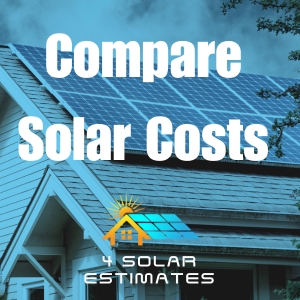
Decoding Your Electricity Bill: How Solar Panels Change the Game
Understanding your electricity bill is the first step in managing your home’s energy costs. For many, the details of this monthly statement are often overlooked or not fully understood. But what if you could not just understand it but significantly alter it in your favor? This is where solar panels come into play, shifting the way we think about and pay for electricity. Here’s how solar panels can impact your energy costs over time.
Understanding Your Electricity Bill
Before delving into the solar solution, let’s decode the typical sections of an electricity bill:
- Energy Charges: This is the cost of the electricity you’ve consumed during the billing period. It’s typically measured in kilowatt-hours (kWh).
- Transmission and Distribution Charges: These fees cover the cost of transporting electricity from power plants to your home via the grid.
- Metering and Service Charges: These are the fixed costs associated with maintaining your account and meter reading services.
- Taxes and Other Fees: Local, state, and federal taxes, as well as any other regulatory fees or charges.
With a little knowledge, you can learn to read your bill like a pro, understand where your costs are coming from, and make informed decisions about energy use and potential savings.

Breakdown of an Electricity Bill
Account Summary
At the top of your bill, you’ll typically find your account summary. This section provides a quick snapshot of your current bill at a glance, including:
- The billing period: the dates for which the current charges were applied.
- The total amount due: what you need to pay by the due date.
- Previous balance: if there’s any amount carried over from the last billing cycle.
- Payments received: shows the payments you’ve made since the last bill.
Usage Details
This is where things get interesting. The usage section details how much energy you’ve used in the billing period.
- Energy Usage: Your consumption is often shown in kilowatt-hours (kWh), which is the standard unit of measurement for electricity usage. Here, you might see your usage compared to the previous month or the same month last year, which can help you track changes in your consumption patterns.
- Demand Charges: Some bills include demand charges, which are based on the highest rate of electricity usage in a given period.
Cost Calculations
After your usage is detailed, the bill breaks down how that translates into charges.
- Energy Charges: This is your kWh usage multiplied by the rate charged by your electricity provider.
- Time-of-Use Rates: If your provider uses time-of-use rates, you might see different charges for electricity used during peak, mid-peak, and off-peak hours.
- Fixed Charges: These are fees that don’t change from month to month, such as customer service or infrastructure maintenance fees.
Additional Fees and Taxes
At the bottom of your bill, you’ll often find:
- Delivery Charges: These are the costs of delivering electricity from the provider to your home, including the maintenance of power lines and other infrastructure.
- Taxes and Governmental Fees: Here, you’ll see any applicable local, state, or federal taxes, as well as charges from governmental or regulatory bodies.

Graphs and Comparisons
Many utility companies provide a graph that shows your monthly energy usage over a year. This can help you identify trends, such as increased usage during summer or winter months.
Reading Between the Lines
Now that you understand the different components of your bill, you can start to analyze your own energy habits:
- Peak Hours: Are you using more energy during peak hours when it’s more expensive? Shifting usage to off-peak times can save you money.
- Seasonal Changes: Are your bills much higher in certain months? This might be due to heating in the winter or cooling in the summer, indicating a potential area for improved energy efficiency in your home.
Now, let’s examine how adding solar panels to your home changes this dynamic.
Solar Panels and Energy Charges
Solar panels generate electricity during daylight hours, which can directly offset your energy charges. If your system is producing more energy than you’re consuming, this surplus can often be sold back to the grid, giving you credits on your bill in a process known as net metering.
Impact on Transmission and Distribution Charges
While these charges may not be eliminated, as you’re still connected to the grid, solar panels can reduce the electricity that your home pulls from the grid, which may lower these fees over time.
Service Charges and Solar
These fixed charges typically remain the same as solar panels don’t change the need for metering or customer service. However, some energy companies offer special solar tariffs that could potentially lower these costs.
Every month, your electricity bill arrives, detailing your energy usage and the associated costs. While you may be familiar with the charges for the electricity you use (measured in kilowatt-hours or kWh), there’s another item on your bill that’s worth understanding: service charges.
What Are Service Charges?
Service charges are fixed costs included in your electricity bill regardless of the amount of energy you consume. These fees cover the utility’s costs of maintaining the electrical grid, customer service operations, and other administrative functions. They can appear as:
- Customer charge: A flat fee for being connected to the grid.
- Meter charge: The cost for the metering technology and its maintenance.
- Infrastructure charge: Fees for the upkeep of the electrical network.

How Do Solar Panels Affect Service Charges?
When you install solar panels, you’re still connected to the grid. This connection is essential for two reasons: first, it allows you to use electricity when your panels aren’t producing enough power (like at night), and second, it enables you to send excess power back to the grid in exchange for credits (in areas where net metering is available).
However, even with solar panels, you will still incur service charges. Here’s what you need to know:
- Unavoidable Fees: Service charges are typically non-negotiable and must be paid regardless of how much energy you use or produce.
- Solar Offset: While service charges are constant, the energy portion of your bill can be significantly reduced or even offset completely if your solar system produces enough energy.
- Net Metering: In some regions, if you generate more electricity than you use, you can receive credits that apply to any service charges. The specifics vary by location and utility company.
Making Sense of the Charges
If you’re considering solar panels, it’s important to understand that while you can dramatically reduce your energy charges, service charges will remain as a fixed cost on your bill. However, this doesn’t diminish the value of solar:
- Reduced Dependency: Your reliance on the grid decreases, which means while you pay service charges, your actual energy costs can be much lower.
- Stable Costs: Service charges are generally stable, so they won’t fluctuate like energy costs can, making your bills more predictable.
With solar panels, the goal is to reduce the variable portion of your electricity bill – the part that changes with your energy usage. The fixed service charges will still apply, but the overall savings on your energy costs can be substantial, making the investment in solar energy a financially savvy decision for many homeowners.

Maximizing Solar to Reduce Costs
Implementing solar panels means you can watch your energy charges decrease as your home produces a significant portion of its own energy. The more energy your solar system produces, the less you need from the grid, leading to potential savings.
Monitoring and Adjusting Usage
With solar panels, you become more than a consumer; you become a producer. Monitoring systems allow you to track production and consumption, providing the opportunity to adjust usage habits to maximize solar benefits.
The Long-Term Game
The initial investment in solar panels is offset by the long-term savings on your energy bill. Over time, the cost of the solar system can be recouped through what you save on electricity, often making the return on investment quite favorable.
Switching to solar isn’t just about being eco-friendly; it’s a financially strategic move. With each sunrise, solar panel owners are presented with the opportunity to reduce their reliance on the grid, lower their energy costs, and enjoy the peace of mind that comes with sustainable living.
And if you’re ever considering making this game-changing move to solar, remember that 4 Solar Estimates is here to guide you through the process and connect you with competitive quotes today. Our expertise ensures that the transition to solar energy is smooth and beneficial for your home and your wallet.
COMPARE SOLAR QUOTES
Leave a Reply